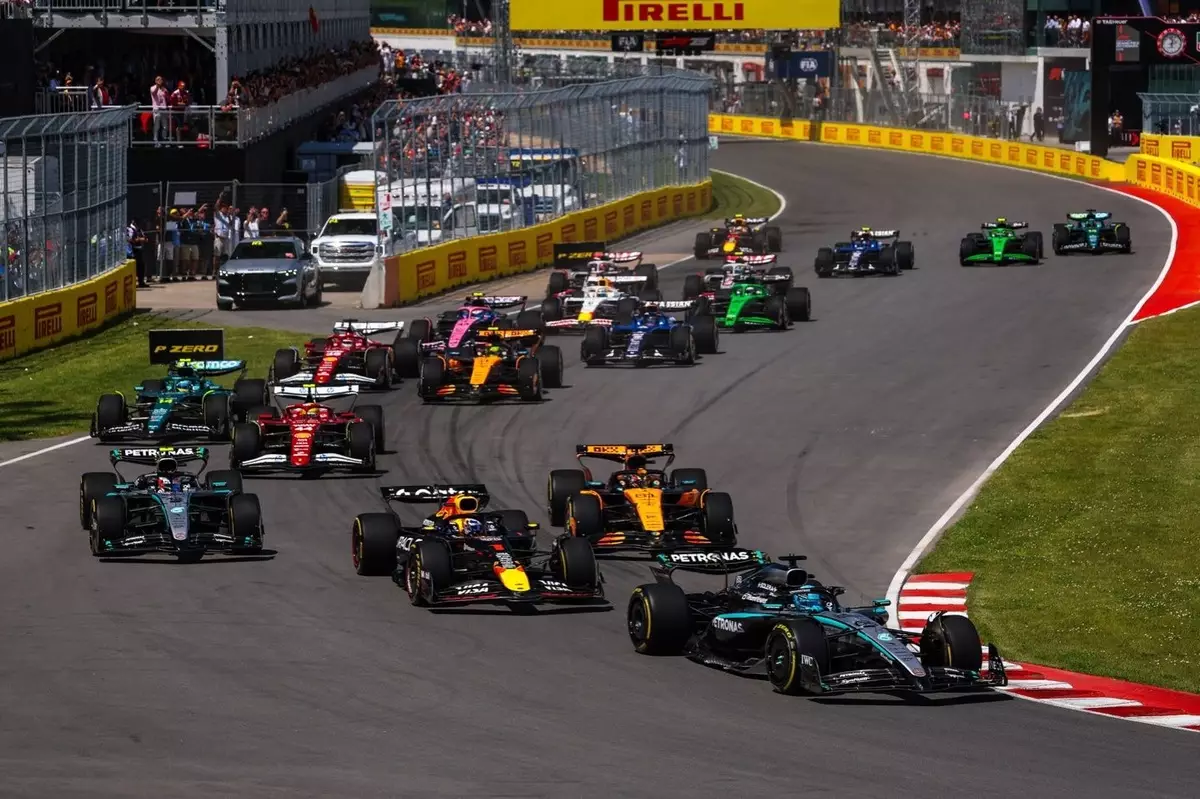In an era where environmental consciousness redefines global industries, Formula 1 emerges as a pioneering force committed to transforming racing into a beacon of sustainability. The sport’s recent strides toward achieving net-zero carbon emissions by 2030 are not just ambitious—they are revolutionary for the entire motorsport ecosystem and beyond. With a strategic reduction of 26% in carbon emissions over the past seven years, F1 is daring to challenge its reputation as an energy-intensive spectacle and instead position itself as an innovator in green technology.
The core of this venture lies in its ambitious goals—aiming to cut 50% of absolute emissions compared to 2018 levels, while simultaneously managing growing popularity and demand. The fact that the global audience continues to swell, with increased race attendances and more Grands Prix per season, underscores F1’s confidence that sustainability and growth can coexist. This juxtaposition of expansion and ecological responsibility illustrates a commendable, if complex, balancing act, demonstrating that environmental leadership need not hinder commercial or entertainment ambitions.
Transformation in Practice: Turning Visions into Reality
The tangible results are evident. Factory emissions from F1 teams have seen a remarkable 59% reduction, a feat achieved through the immediate switch to renewable energy sources. Moreover, logistical operations have become leaner and greener, with a 25% cut in travel emissions, thanks in part to innovative use of biofuel-powered freight trucks across Europe and more efficient aircraft like the Boeing 777F. Such measures highlight how industry-wide reforms—even in a sport as high-profile and resource-dependent as F1—can catalyze meaningful change.
However, these accomplishments are not solely about logistics; they reflect a shift in the sport’s cultural fabric. The adoption of sustainable fuels in all F1 cars, set to debut soon, represents a profound technical evolution. This move not only addresses environmental concerns but also signals to automakers and consumers that racing technology can pave the way for cleaner transportation solutions. These innovations reinforce F1’s role as a laboratory for the future of automotive excellence, serving as a testing ground for the sustainable fuels that could reshape road transport.
Leadership and Legacy: The Human Element
Stefano Domenicali, F1’s CEO, underscores the importance of passion and innovation in the sport’s sustainability journey. His statement emphasizes that this is not a superficial effort but a concrete, measurable strategy rooted in a culture of continuous improvement. The sport’s leadership recognizes that sustainability must become ingrained in its DNA, inspiring stakeholders from teams to fans to embrace eco-friendly practices.
Furthermore, the inclusion of sustainability as a core principle nurtures a sense of responsibility that extends beyond the racetrack. It signals to a global audience that even high-octane entertainment can foster environmental stewardship. The educational potential here is enormous; by demonstrating that technological feasibility and environmental responsibility can go hand-in-hand, F1 is setting an inspiring precedent for other sports and industries.
Challenges and Opportunities: Navigating the Road Ahead
Despite these impressive strides, the journey toward net-zero is fraught with challenges. Scaling sustainable fuel production, ensuring the durability of green logistics, and maintaining the thrill of racing amid stricter regulations will require innovation, collaboration, and unwavering commitment. Yet, these hurdles also open myriad opportunities for technological breakthroughs, partnerships, and even policy influence.
The upcoming regulation overhaul in 2026 signifies more than just car design change; it encapsulates F1’s broader commitment to pushing the boundaries of what is possible. As the sport integrates sustainable fuels and cleaner energy sources, it transitions from a traditional spectacle into a dynamic platform for environmental advocacy. This transformation underscores a bold truth: that sports—in all their passion and spectacle—can be powerful catalysts for societal change, provided their leaders refuse to settle for the status quo.
The question remains: can F1 sustain this momentum? The answer lies in its willingness to innovate, adapt, and inspire. As the sport evolves, its ability to marry excitement with responsibility will determine whether it truly becomes a model for sporting and environmental excellence. The stakes are high, but the potential for positive impact is even greater—if the spirit of racing continues to lead the way into a greener future.

